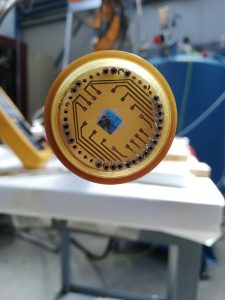 Many questions that today’s physics poses, from the nature of dark matter to the properties of the quantum vacuum, require to detect electromagnetic signals with energy under the millielectronvolt (a thousand times less energetic than visible light) and of very low intensity, up to the limit of the single photon.
Many questions that today’s physics poses, from the nature of dark matter to the properties of the quantum vacuum, require to detect electromagnetic signals with energy under the millielectronvolt (a thousand times less energetic than visible light) and of very low intensity, up to the limit of the single photon.
All the while trying to minimize noise sources. This is the challenge that the INFN project SIMP (SIngle Microwave Photon detection) has taken up. If successfully completed, experiments such as QUAX, which looks for galactic axions of a few dozen microelectronvolts, would be greatly enhanced.
SIMP is developing two devices based on nanotechnology and superconductivity: Transition Edge Sensors and Josephson junctions. The former are currently able to measure single photons in the infrared, while the latter are used as qubits within quantum computers. The project is supported by the LNF, the INFN of Pisa and Salerno, the TIFPA of Trento, together with the CNR-IFN of Rome, the CNR-NEST of Pisa and the INRIM of Turin.
 INFN-LNF Laboratori Nazionali di Frascati
INFN-LNF Laboratori Nazionali di Frascati